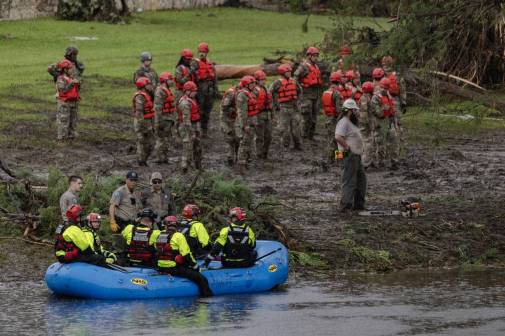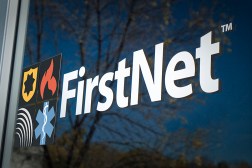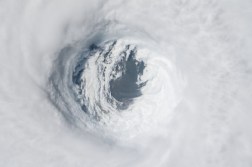GIS-powered National Mutual Aid System will allow easier resource sharing across fire jurisdictions

Firefighters may soon gain a faster and easier way to ask for help from neighboring departments during major incidents.
Made possible through a partnership among the International Association of Fire Chiefs, Intermedix and Esri, a new cloud-based system is being developed that could shave hours off the time it sometimes takes to request additional help, while also enabling the expansion of mutual aid agreements across state lines.
The new system, called the National Mutual Aid System, replaces a text-based tool built by IAFC in 2008 called the Mutual Aid Net and will include a map-based interface that organizers say will allow for the creation of “virtual departments.”
Systems like these can replace the typical practice of a chain of phone calls starting at the state emergency management agency and trickling down to the local agency best suited to help, said Cy Cole, director of federal preparedness at Intermedix.
“Right there, you can see where we’ve got a little bit of a slowdown,” Cole said. “And that little bit of slowdown sometimes translates to hours, and in the event of a fire, of course, that’s catastrophic.”
The new system, announced earlier this month, is scheduled for release at the Wildland-Urban Interface Conference in Reno, Nevada, starting on February 27.
While the old tool allowed departments in participating states to enter a ZIP code and enter a request for aid from nearby jurisdictions, the new system is intended to allow for more precise mapping of resources, down to the station level.
If a station in Jacksonville, Florida, is responding to an incident, for instance, allowing more precise location data could mean the difference between another Florida station offering assistance or a closer station in southern Georgia. Cole recounted an incident years ago in which the city and county of Los Angeles struggled to coordinate on calls, sometimes forcing one entity to drive across town even though the other was already right across the street.
“With the new system, the entire nation will be in one instance of the software,” Cole said. “It will be hosted in the cloud so we hopefully will get a more comprehensive picture of what’s going on. We’ll be able to share data more easily and hopefully it will be faster.”
The existing system’s participants include 18 states: Alaska, Arizona, Florida, Georgia, Idaho, Indiana, Kansas, Michigan, Missouri, New Hampshire, North Carolina, Ohio, Pennsylvania, Tennessee, Utah, Virginia, Wisconsin and Washington.
Cole said he believes these states will move to the new system, but that has not been verified.
The new system’s geospatial capabilities will be backed by Esri’s ArcGIS platform and Intermedix’s WebEOC, software used to manage information about available resources during crises. By combining the two, jurisdictions are expected to be able to share information in near-real time.
The old system works, Cole said, but new technologies have since arrived that will make it work even better.
“What we’re doing is delivering information to the point of need at the time of need,” he said. “If I’m out in the field and I need information, I need it right now. Wildland fires — when the wind changes your whole scenario changes, so the ability to rapidly adjust and flex resources in and out in a matter of hours than days can make a huge difference.”
While the current iteration of the project is designed for use by fire response, Cole added that the system could be expanded for use by other types of emergency management agencies.






